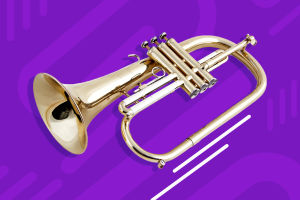The harp, a large plucked string instrument, is one of the most important instruments in modern orchestras.
The harp is a versatile polyphonic instrument that can be used for solo, repertoire and ensemble playing.
The harp has been played in many different regions and is also found in Europe, America and Asia.
The harp was known in Ancient Egypt as the Beni lyre and in Ancient Greece and Rome as the lira.
The lira was the earliest plucked string instrument in the West and has been a symbol of Western music since the Renaissance.
Playing the lira was an important way for students to learn music and poetry in ancient Greece.
The lira was the earliest plucked string instrument in the West and the seven-stringed harp was also a symbol of the goddess of lyric poetry, Erato.
By the Middle Ages the harp, known as the bardic, was already being used by troubadours, making it popular throughout Europe.
In 1720, Jacob Hochbrucker of Germany designed a harp with five pedals that controlled the string hooks, and in 1810, Sébastien Érard, a French pianist, invented a modern pedal harp.
Later, in 1897, another Frenchman invented the chromatic harp.
The harp became popular in France and became one of the plucked instruments of orchestral music.
In terms of harp music competitions, France was the first country to hold a harp music competition and Israel was the first country to hold a world music harp competition.
In the early days, the harp had only a few strings arranged in a natural scale and could play a limited number of keys.
The pedal harp can play all the ascending and descending tones and its seven pedals allow the harp to be transformed into any key of the natural scale.
Combined with the principle of equal temperament, the seventh string of the harp's natural scale can be transformed into various seventh chords combining four notes.
The harp is played with both hands, but without the use of the little finger.
The sound of the harp is similar to that of the piano, but it is lighter and more airy.
The popular lira is now available in 7, 10 and 16 string versions.
The strings are made of either metal or nylon. Steel strings have a crisp, bright and long sound.
Nylon strings: soft and elegant.
Nylon strings are more beautiful for classical music.
There are two types of material: slab and box, where the slab is made of solid wood, without a resonance box, and the volume is lower compared to the box.
The tone is more crisp and clear.
Box type is with sound hole of this is the resonance box.
So the resonance is better and the speaker is bigger and fuller in tone.
Beginners can choose according to their preferences, each has its own characteristics.


